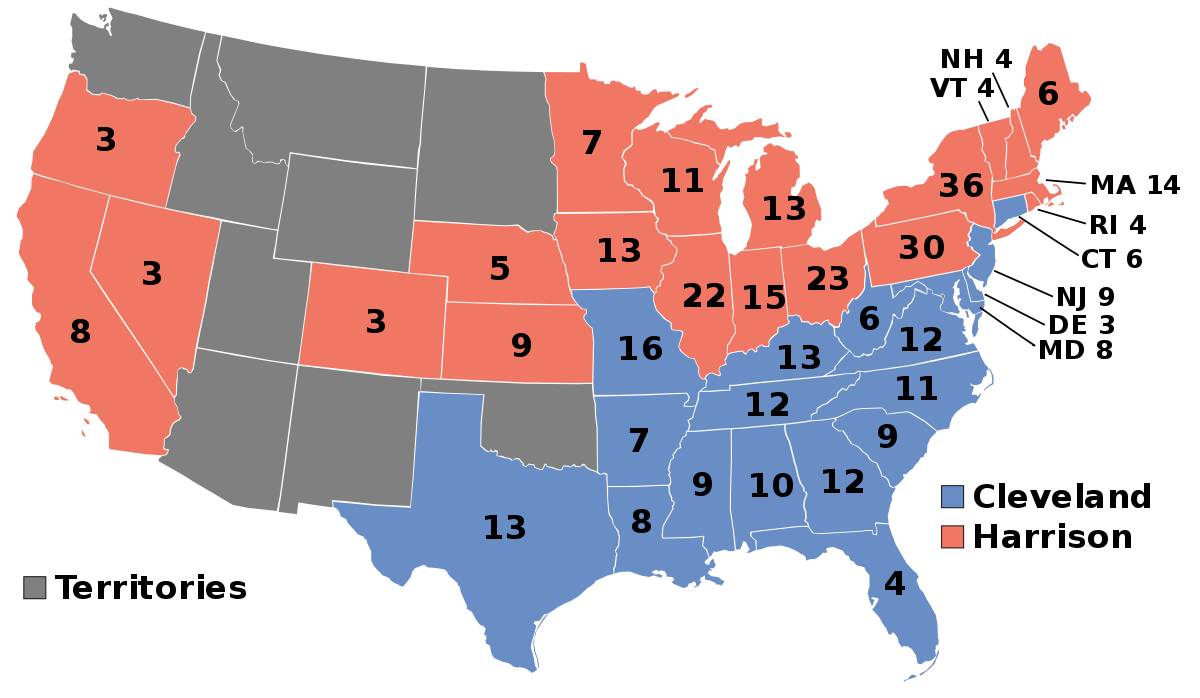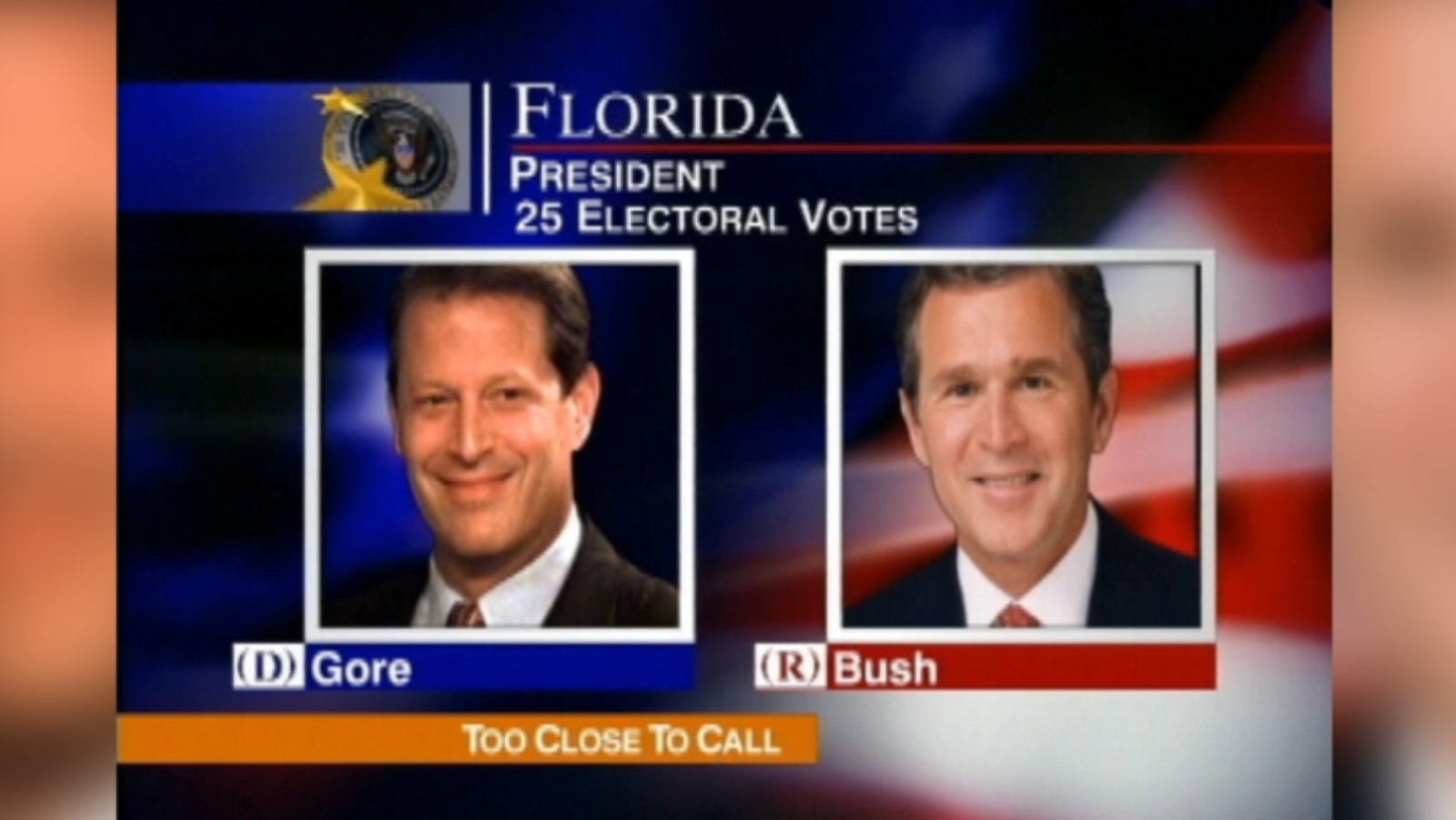In our recent history there have been some very close presidential elections, but elections decided by a small margin are certainly not something new. Throughout our country’s short history we have had more than our fair share of presidential elections that were too close to call. Here are the top 10 presidential elections based on the electoral college votes.
In 1960 John F. Kennedy (D) defeats Richard Nixon (R) by 84 Electoral Votes and won the popular vote by .2%.
The election on November 8 remains one of the most famous election nights in American history. As the early returns poured in Kennedy opened a large lead in the popular and electoral vote, and appeared headed for victory. However, as later returns came in from the Western states, Nixon began to steadily close the gap with Kennedy. It was not until the afternoon of Wednesday, November 9 that Nixon finally conceded the election and Kennedy claimed victory. A sample of how close the election was can be seen in California; Kennedy appeared to have carried the state by 37,000 votes when all of the voting precincts reported, but when the absentee ballots were counted a week later, Nixon came from behind to win the state by 36,000 votes. In the national popular vote Kennedy beat Nixon by just one tenth of one percentage point (0.1%) – the closest popular-vote margin of the twentieth century. Kennedy carried 11 states by three percentage points or less, while Nixon won 5 states by the same margin.
In 1844 James Polk (D) defeats Henry Clay (Whig) by 65 Electoral Votes and won the popular vote by 1.4%.

The United States presidential election of 1844 saw Democrat James Knox Polk defeat Whig Henry Clay in a close contest that turned on foreign policy, with Polk favoring the annexation of Texas and Clay opposed.
This was the last presidential election to be held on different days in different states, as starting with the presidential election of 1848 all states held the election on the same date in November.
In 1880 James Garfield (R) defeats Winfield Hancock (D) by 59 Electoral Votes and won the popular vote by .1%.

Incumbent President Rutherford Hayes did not seek re-election, keeping a promise made during the 1876 campaign. The Republican Party eventually chose another Ohioan, James Abram Garfield, as their standard-bearer. The Democratic Party meanwhile chose Civil War General Winfield Scott Hancock as their nominee. Despite capturing fewer than 2,000 more popular votes Garfield was elected, capturing 214 of the states’ 369 electoral votes.
In 1888 Benjamin Harrison (D) defeats Grover Cleveland (R) by 37 Electoral Votes but the popular vote by .8%.

Incumbent President Grover Cleveland received the greatest number of popular votes, but Republican challenger Benjamin Harrison’s 233 electoral votes topped Cleveland’s 168 to win the election. Just 12 years earlier, in the election of 1876, the same thing had happened where the President-elect had failed to win the popular vote. It would not happen again until the election of 2000, 112 years later.
In 1884 Grover Cleveland (D) defeats James Blaine (R) by 37 Electoral Votes and wins the popular vote by .7%.

The United States presidential election of 1884 featured excessive mudslinging and personal acrimony. On November 4, 1884, New York Governor Grover Cleveland narrowly defeated Republican United States Senator James G. Blaine of Maine to become the first Democrat elected President of the United States since the election of 1856, before the American Civil War. New York decided the election, awarding Governor Cleveland the state’s 36 electors by a margin of just 1,047 of 1,167,003 votes cast.
In 1848 Zachary Taylor (Whig) defeats Lewis Cass (D) by 36 Electoral Votes and wins the popular vote by 4.8%.

President James Polk, having achieved virtually all of his objectives in one term and suffering from declining health that would take his life less than four months after leaving office, chose not to seek re-election. With the exception of South Carolina, who left the selection of electors to its legislature, the election of 1848 marked the first time in which every state in the union voted for President and Vice President on the same day: November 7, 1848. Taylor won election over Cass, capturing 163 of the 290 electoral votes cast.
In 2004 George W. Bush (R) defeats John Kerry (D) by 35 Electoral Votes and wins the popular vote by 2.4%.

As in the 2000 presidential election, voting controversies and concerns of irregularities emerged during and after the vote. The winner was not determined until the following day, when Kerry decided not to dispute Bush’s win in the state of Ohio. Both Kerry and future Democratic National Committee Chairman Howard Dean have stated their opinion that voting in Ohio did not proceed fairly and that, had it done so, the Democratic ticket might have won that state and therefore the election.
In 1916 Woodrow Wilson (D) defeats Charles Hughes (R) by 23 Electoral Votes and wins the popular vote by 3.1%.

The United States presidential election of 1916 took place while Europe was embroiled in World War I. The campaign pitted incumbent President Woodrow Wilson, the Democratic candidate, against Supreme Court Justice Charles Evans Hughes, the Republican candidate. After a hard-fought contest, Wilson defeated Hughes by a narrow margin.
In 2000 George W. Bush (R) defeats Al Gore (D) by 5 Electoral Votes but loses the popular vote by .5%.

The United States presidential election of 2000 was a contest between Democratic candidate Al Gore, then-Vice President, and Republican candidate Bush narrowly won the November 7 election, with 271 electoral votes to Gore’s 266. The election featured a controversy over who won Florida’s 25 electoral votes (and thus the presidency), the recount process in that state, and the unusual event that the losing candidate had received 543,816 more popular votes than the winner.
In 1876 Rutherford Hayes (R) defeats Samuel Tilden (D) by 1 Electoral Vote but loses the popular vote by 3%.

The United States presidential election of 1876 was one of the most disputed and intense presidential elections in American history. Samuel J. Tilden of New York defeated Ohio’s Rutherford Hayes in the popular vote, and had 184 electoral votes to Hayes’ 165, with 20 votes yet uncounted. These 20 electoral votes were in dispute: in three states (Florida, Louisiana, and South Carolina) each party reported its candidate had won the state, while in Oregon one elector was declared illegal (on account of being an “elected or appointed official”) and replaced. The votes were ultimately awarded to Hayes after a bitter electoral dispute.
4 Comments
This completely ignores the second John Adams – Thomas Jefferson contest in 1800, when almost all Electoral votes were chosen by the Legislatures of each state. Had roughly 200 votes not been cast in Manhattan for three state Assemblymen – largely unknown to history – which gave the Legislature’s majority to Jefferson’s party, Jefferson would have lost to Adams a second time, and that lovely memorial on the Tidal basin likely wouldn’t be there.
Footnote – I say “largely unknown” state Assemblymen. In reality one was George Clinton, longest serving Governor of New York, Vice President under both Jefferson and Madison, first Vice President to die in office, and one of New York’s two contributions to statuary hall in the US Capitol. But he’s not known for the critical role he played in the state Assembly election that made Thomas Jefferson President.
I am wondering why 1976, Carter v. Ford isn’t on the list – Carter by 2% and 57 electoral votes. Based on the way the list in the article is arranged, in descending order of electoral vote margins, it should go right in between the elections of 1880 and 1888….
In 1960 John Kennedy defeated RICHARD Nixon…not ROBERT Nixon…Editors…heads up.
Some really nice facts I didnt know about US presidents.